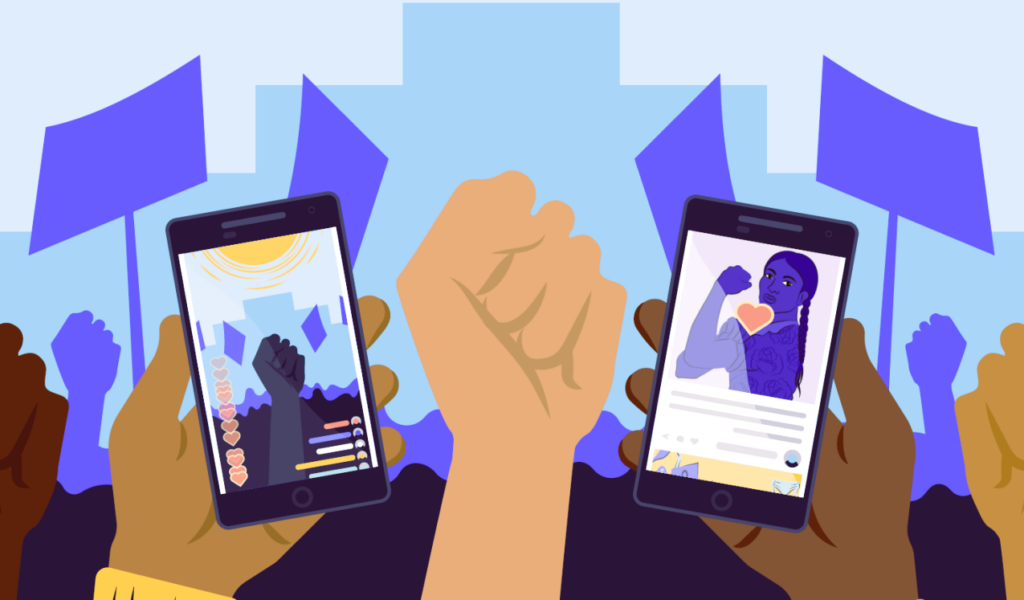In the era of rapid technological advancement, digital activism has emerged as a potent force for human rights advocacy. The fusion of information technology (IT) and activism has revolutionized the way individuals and organizations champion human rights causes globally. This article delves into the essence of digital activism, exploring its impact, tools, and the crucial role it plays in advancing the cause of human rights.
Understanding Digital Activism
1. Definition:
Digital activism, also known as online activism or cyber activism, refers to the use of digital tools, platforms, and technologies to promote and advance social and political causes, with a particular emphasis on human rights. It leverages the power of the internet and digital communication channels for advocacy, awareness-raising, and mobilization.
2. Characteristics:
Digital activism is characterized by its reliance on online spaces, including social media, websites, blogs, and other digital platforms. It often involves the rapid dissemination of information, coordination of campaigns, and mobilization of supporters through online networks.
3. Global Reach:
One of the key strengths of digital activism is its ability to transcend geographical boundaries. Activists can connect with like-minded individuals, share information, and coordinate actions on a global scale, amplifying the impact of their advocacy efforts.
Tools of Digital Activism

1. Social Media Platforms:
Social media platforms, such as Twitter, Facebook, Instagram, and LinkedIn, serve as powerful tools for digital activism. Hashtags, viral campaigns, and real-time updates allow activists to engage with a broad audience and generate momentum for their causes.
2. Online Petitions and Campaigns:
Platforms like Change.org enable activists to create online petitions and campaigns, garnering support and signatures from individuals worldwide. These petitions can be powerful tools for advocating policy changes, raising awareness, and mobilizing public opinion.
3. Blogs and Online Articles:
Activists often use blogs and online articles to share in-depth analyses, personal stories, and expert opinions on human rights issues. Blogging platforms provide a space for individuals to express their perspectives and contribute to public discourse. We looked at common problems and opportunities in the field of IT recruiting and talent attraction, more details in our article.
4. Digital Advocacy Websites:
Dedicated websites and platforms focused on human rights advocacy provide a centralized space for information, resources, and calls to action. These sites often feature multimedia content, reports, and interactive tools to engage visitors in the cause.
5. Crowdsourced Mapping:
Crowdsourced mapping tools, such as Ushahidi, allow activists to collect and visualize data related to human rights abuses or social injustices. These maps can be powerful tools for documenting incidents, raising awareness, and advocating for accountability.
Impact of Digital Activism on Human Rights
1. Amplifying Voices:
Digital activism has democratized the space for advocacy, allowing individuals and grassroots organizations to amplify their voices. Through online platforms, marginalized communities can share their stories and experiences, drawing attention to human rights violations.
2. Real-Time Reporting:
The immediacy of digital communication enables real-time reporting of human rights abuses. Activists on the ground can use social media and online platforms to share information, images, and videos, providing the global community with instant insights into unfolding situations.
3. Mobilizing Global Support:
Digital activism facilitates the rapid mobilization of global support for human rights causes. Hashtag campaigns, online petitions, and coordinated efforts on social media platforms can attract attention and solidarity from individuals, organizations, and influencers worldwide.
4. Challenging Authoritarianism:
In regions where freedom of expression is restricted, digital activism becomes a crucial tool for challenging authoritarian regimes. Online platforms provide a space for dissent, alternative narratives, and the organization of protests and movements.
5. Policy Advocacy:
Digital activism contributes to policy advocacy by providing a platform for informed discussions and debates. It allows activists to engage with policymakers, share research findings, and advocate for legislative changes to protect and promote human rights.
Challenges and Ethical Considerations

1. Digital Divide:
The digital divide, the gap in access to digital technologies, poses a challenge to digital activism. Inequitable access to the internet and online tools can limit the participation of certain communities in digital advocacy efforts.
2. Misinformation and Disinformation:
The rapid spread of information online also brings the risk of misinformation and disinformation. Activists must navigate the challenge of ensuring the accuracy and reliability of the information they share to maintain credibility.
3. Online Harassment and Surveillance:
Activists engaging in digital advocacy often face risks of online harassment and surveillance. Authoritarian regimes may use digital tools to monitor, intimidate, or silence activists, necessitating the need for secure online practices.
Standards in Digital Activism
For those interested in exploring digital activism and its ethical considerations, the Wikipedia page on Digital Activism offers a comprehensive overview. This resource covers the history, methodologies, and notable examples of digital activism, providing valuable insights into the standards and ethical considerations that shape this dynamic field.
The Future of Digital Activism
As technology continues to evolve, the future of digital activism holds exciting possibilities. Emerging technologies such as blockchain and virtual reality may offer new avenues for secure communication, documentation, and immersive storytelling in the realm of human rights advocacy.
Conclusion
Digital activism has become an indispensable force in the realm of human rights advocacy, leveraging the power of IT to amplify voices, raise awareness, and mobilize global support. As technology continues to evolve, the ethical considerations and standards in digital activism will play a crucial role in shaping its impact on human rights causes. By harnessing the potential of online platforms, individuals and organizations can continue to push boundaries, challenge injustices, and contribute to the advancement of human rights on a global scale.
